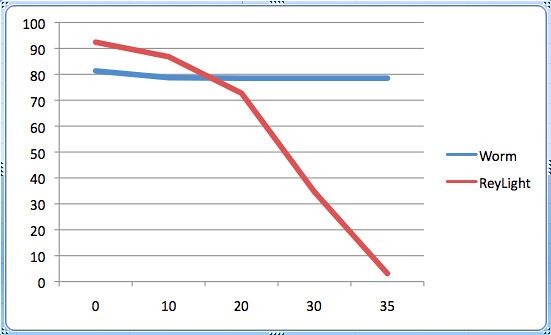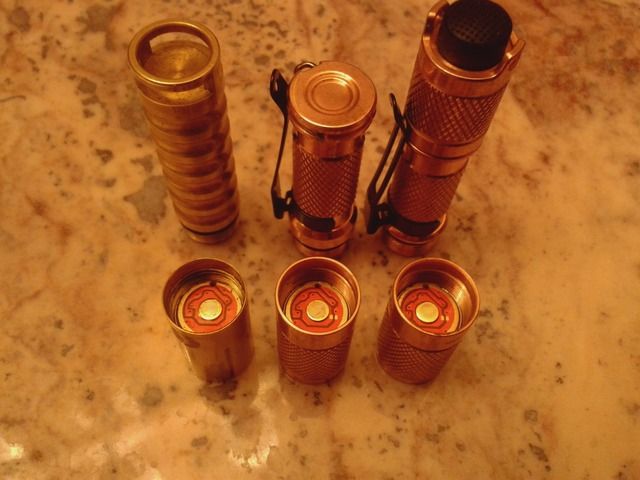Seemed like it would be good to post this data here also. Data taken on my brass worm. There is discussions on CPF that the performance seen above is not regulation, but just the behavior of a Nimh battery.
Data
two batteries, both at 1.45V. Both provided 1.1A of current to the driver in high mode, slowly increasing, for the first minute or so. Then the current jumped up to 2A and started slowly decreasing. I don’t know alot about Nimh battery characteristics, but I suspect the driver on high for my worm IS regulated, and that the regulation input threshold is crossed and the light performance changes drastically after that.
One more data point - another, newer eneloop that had finished charging in the past half hour. current in high mode started at 1.05A, and slowly increased to 1.35A over about 5 minutes. Then current jumped to 1.95A, I stopped testing. Further confirmation that the Worm is regulating, at least somewhat, early in the eneloop battery life. Also think I figured out how to test this at work simply. Hope to dry run today with the Worm.
One thing I wonder is, if there is regulation, why did they set it where it is? Alkalines will never really regulate with this design, their impedance is too high at these current levels. Eneloops don’t take advantage of this, as their voltage is lower than the set point for the majority of their operating time. And who would design a light around lithium primaries? Finally, if it was for rechargeable lithiums, which the manufacturers say are not compatible, 1.35V is ridiculously below their operating range. It may just be a by product of what ever sort of controller being used.
GOOD TEST SETUP UPDATE - Digital display lab power supply with fairly short wires for leads. I believe the previous testing was distorted due to the current meter impedance.
Brass worm data
Voltage (V) Current High (A) Current Med (A)
1.50.73 0.160
1.4 0.80 0.173
1.3 0.90 0.187
1.2 1.02 0.203
1.1 1.23 0.237
1.0 1.65 0.25?
Sorry jon_slider, not sure how to get a graph and embed it without going through an external website, which is a PITA. Data summary is that the power demanded from the power supply goes up about 25% as the voltage drops from 1.5V to 1.0V. The power increase in medium mode is more dramatic, roughly 2x. But since eneloops are more like current sources, not such a huge deal.
I also note that on the high mode the current drawn from the supply decreases a bit as everything warms up, which I suspect is an artifact of a constant voltage on the LED and LED efficiency increasing as it warms up. But that is just my guess. I did note the current in low mode varied from the low 0.02xA area to a bit above 0.03xA as the voltage decreased. Note the “x” is just a number that I did not record.
I conclude the Brass Lumintop Worm is regulated in some fashion. I suspect the increase in power as the input voltage decreases is due to conversion inefficiencies of the driver as the current to it increases, but that is just an educated guess. Look forward to seeing if the Maratac rev 4 is the same.






